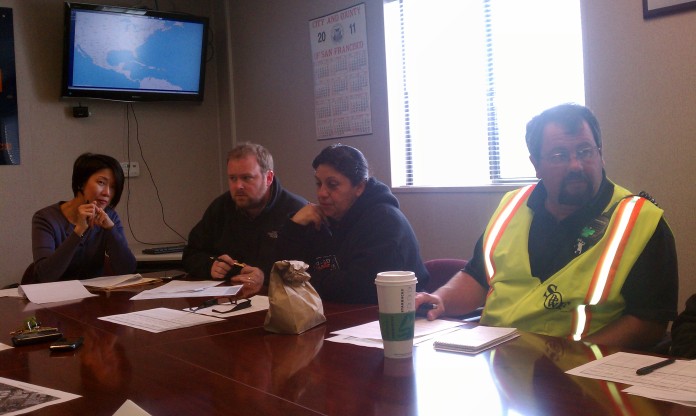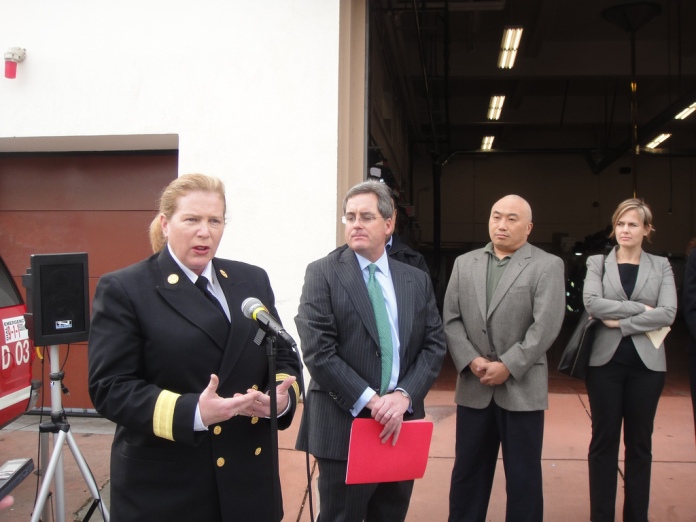A few weeks ago I had the pleasure of attending a two-day training entitled “Mapping Environmental Scenarios & Solutions with Google Technology” hosted by the Google Earth Outreach team. “Pleasure” might be something of an understatement — not only was the training very well executed by the capable and knowledgeable Earth Outreach crew, but the sheer volume of free tools and web services that they dropped on us was mindboggling. In the hopes of sharing the wealth, especially for those of us in the public sector who need all the free resources we can marshall, I’m writing this post to tell you about what I learned, in two parts. In this first post, I’ll cover the basics of the Google Maps & Earth services, as well as introduce you to some brand new tools: Fusion Tables, for managing and visualizing data, and Open Data Kit (ODK), for collecting and aggregating data. In Part II, I’ll show all the power users out there whay they can do with the Maps and Earth APIs, and finish up with some amazing odds and ends tucked away on the Google shelves.
Maps & Earth
At this point, in April of 2011, I’m assuming most of you reading this are very aware of Google Maps and Google Earth. I won’t spend much time explaining them other than to say that both have revolutionized the geospatial world, in both two and three dimensions.
I, for one, would hard-pressed to imagine life without Google Maps. Yes, there are other mapping services available, but Google Maps has always seemed to me the cleanest and tightest. Or, to borrow a phrase from Andy Samberg and Chris Parnell of SNL, Google Maps is the best, true that, Double True! But what really makes Maps stand out from the crowd is the ease with which new maps can be created and shared. At SF Environment, we use an increasing number of Google Maps to share information with a geo-location component, such as this, this, and this.
LATE BREAKING UPDATE: Google has just launched Map Maker that lets users directly edit places in Google Maps, from buildings to businesses.
The general internet public is probably less familiar with Google Earth. With Earth, Google has created their own 3-D model of the globe, complete with rendered satellite imagery and even line models of parcels and buildings. The result is a truly immersive and very powerful tool for storytelling. I still remember being awed by Rebecca Moore’s 2006 “Logging Flyover” of the Santa Cruz Mountains that single-handedly changed public opinion about a dispute over logging rights at the time. Creating custom tours or “fly-overs” with text, links, embedded video and even audio narration does take some time but is remarkably simple. Check out a few great examples here and here.
Fusion Tables & ODK
One of the most exciting tools we covered at the training was Google’s new Fusion Tables which just may herald the dawn of web-based GIS. Born in Google Labs as an experiment in cloud data management, Fusion Tables is an attempt to combine data management and collaboration to enable “merging multiple data sources, discussion of the data, querying, visualization, and Web publishing.” Pretty cool stuff, and sorely needed.
At first glance, Fusion Tables looks like a beta version of Google Spreadsheets. The service is very new and still a little rough around the edges, but I don’t doubt that it will soon shine as do more mature Google offerings. Data can be entered directly or imported via a text file, but that’s where the similarity with Spreadsheets ends. Once your data is in, simply hit a button and you’ve got a map. Publishing to Maps is super easy, as is collaboration — all you or you collaborators need is a google account and you are good to go. If you have multiple data sources that reference the same entities, you can easily “fuse” those sources through creating “joins” without knowing how to write out SQL queries. Have a question for your collaborators about some of that fused data? Fusion Tables has built-in discussion tools.
Clearly Google is getting into the GIS game. If Fusion Tables wasn’t enough of an indicator, Google has even begun to post Fusion Tables of public data sets upon which you can build your own mapping project. My favorite? State and County boundary tables obtained from the U.S. Census Bureau and imported by the Fusion Tables team. Sweet! Google is offering an incredible service with Fusion Tables, and it looks like people are already adopting, as evidenced by some State of California data sets being stored as Fusion Tables.
What if the data you want to visualize needs to be first be collected? Open Data Kit promises to integrate these geo-location tools directly into the fieldwork so often necessary to generate data. Open Data Kit is actually a project of the University of Washington’s Change Group that is supported by Google and hosted on Google Code. This set of free and open source tools allows developers to build data collection forms for Android mobile devices. You can take the term “developer” lightly here — in one of the breakout sessions during the Earth Outreach training, we built a data collection form in a matter of minutes. Once published, users can download the ODK Collect app, call up your form, and start logging data that is immediately aggregated on a server with ODK Aggregate, ready for extraction.
Pulling all of these tools together, one possible work flow for data collection and presentation could look like this:
collect with ODK Collect >> aggregate with ODK Aggregate >> extract to Fusion Tables >> publish to Google Maps/Earth
We ran a simple exercise cataloging and mapping plants using Android phones and, while there were a few bumps, it was clear that this is an amazing way to empower your team with a full set of geo-location tools, from data collection all the way through to visualization. After the workshop, my mind was reeling with the possibilities for deploying this suite of tools. Now, if I could only find the time…
Which brings us to the end of Part I of this Google love fest. Check back soon for a deeper dive into the possibilities of Google APIs, along with a few other exciting odds and ends.






